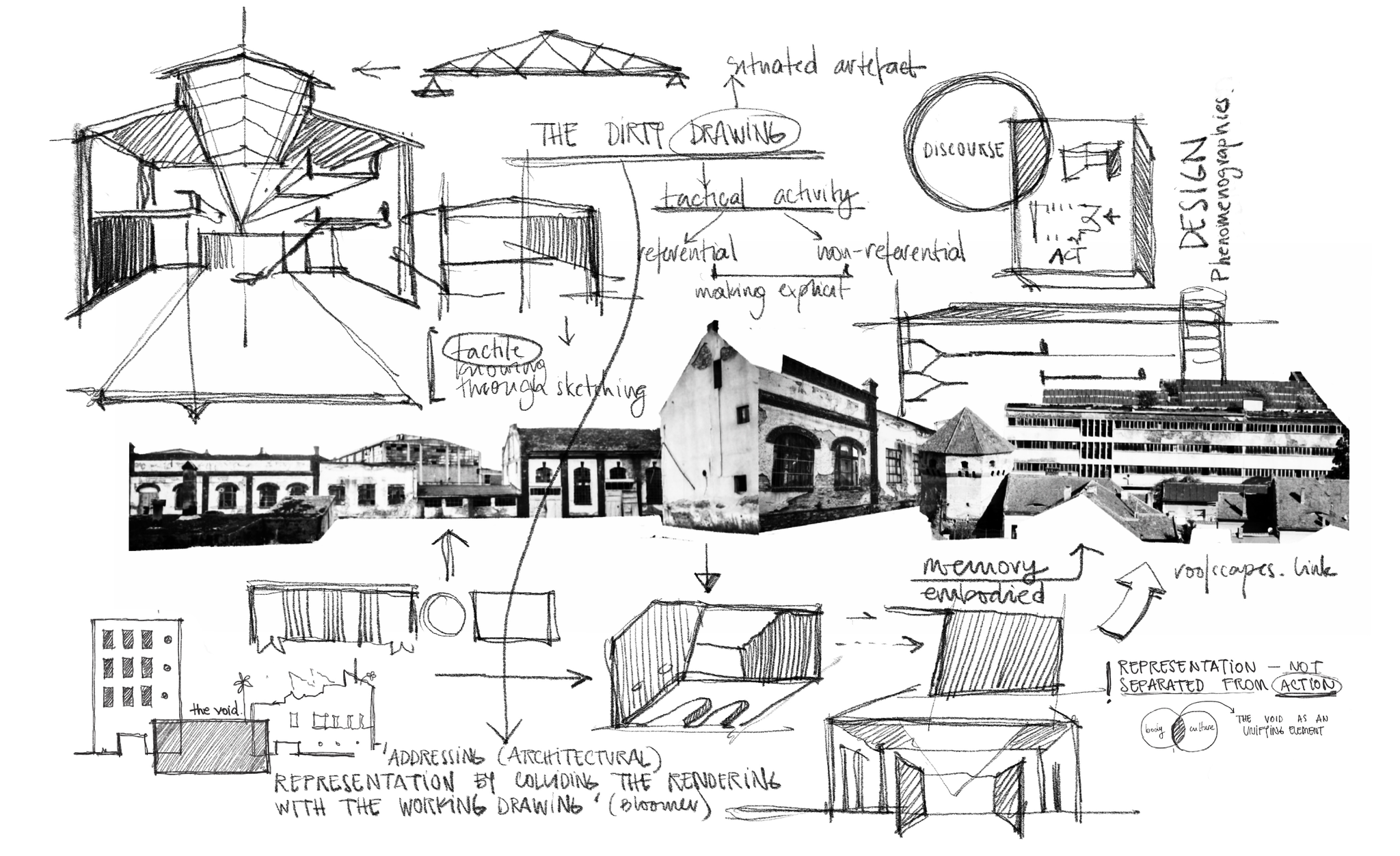———————————
Situated Artefacts: Design-Driven Phenomenographies and Notational Thinking [PRACTICE-SHARING]
Monica Tusinean, Technische Universität Berlin, KIT
Architectural design thinking and the notationality of design practices harbour significant potential to create epistemic bridges between disparate disciplines, both in STEM and the humanities. However, this prospect has often been neglected, as the architectural profession focused on the descriptive aspects of finished drawings, artefacts, and objects without exploring how designers tackle wicked problems (Prominski & Seggern, 2019, p.33) and how solutions can become explicit and transferrable.
In environments where chaotic problems with no clear finish lines demand agile solutions, the exploration of design-based methodologies can unlock new dimensions of research. This approach allows artefacts to become processual objects of study (Ballestrem & Gasperoni, 2023, p.45), leading to unique solutions and new medial practices that can be applied in other disciplines.
During my doctoral research into strategies for the reanimation of intra-urban industrial ruins, artistic and design-based methodologies allowed me to tackle issues that lay at the intersection of spatial, economic, ecologic and cultural practices. A method assemblage of video vignettes and hand drawings emerged that aims to mend a lacuna in the discourse on the transformation and reuse of existing buildings. This practice expresses a modality of codifying tacit knowledge (Polanyi & Sen, 2009, p. 14) that can address issues located at the intersection of overlaying industries (Ghosh, 2021, p. 164).
Using “dirty drawings” (Bloomer, 1992, p.18), defining hand sketches as a heuristic practice (Rowe, 1982, p.18) and making the dynamic process visible within a filmed documentation, as it stretches across heterotopic spaces, turns the act of sketching into a knowledge-generating method that can be taught and which can, for instance, enable the creation of new dimensions of situated artefacts: an entire practice “understood by practitioners holistically as a complex epistemic artefact” wherein “a subclass of these practices is also regarded as consisting of comprehensive cognitive tools” (Ballestrem & Gasperoni, 2023, p.147). Not least, this endeavour also aims to develop new modes of communication across disciplines of topics that are either non-translateable, vague, content-hermetic, or require high degrees of prior knowledge and cannot be easily transported linguistically.
The contribution to the “Drawing Along University Borders” conference would share the technical, cognitive and embodied methods that facilitate this transfer and illustrate how this artistic practice applied to a specific issue in my research. The primary goal during a practice sharing session would be the interactive “live-action” graphical notation of audience input and the attempt to explore the limits of this methodology with practitioners and researchers from other disciplines and professions.
References:
Prominski, M., & Seggern, H. von (Eds.). (2019). Design research for urban landscapes: Theories and methods. Routledge.
Polanyi, M., & Sen, A. (2009). The tacit dimension. University of Chicago Press.
Swarnabh Ghosh, Space Caviar. (2021). On designing without depletion. V-A-C Press.
Bloomer, J. (1992). Abodes of Theory and Flesh: Tabbles of Bower. Assemblage
Rowe, P. G. (1982). A Priori Knowledge and Heuristic Reasoning in Architectural Design. JAE, 36(1), 18.
Ballestrem, M., & Gasperoni, L. (2023). Epistemic artefacts: A dialogical reflection on design research in architecture. AADR.
Keywords: design-driven, artefact, heuristic, drawings, phenomenography


